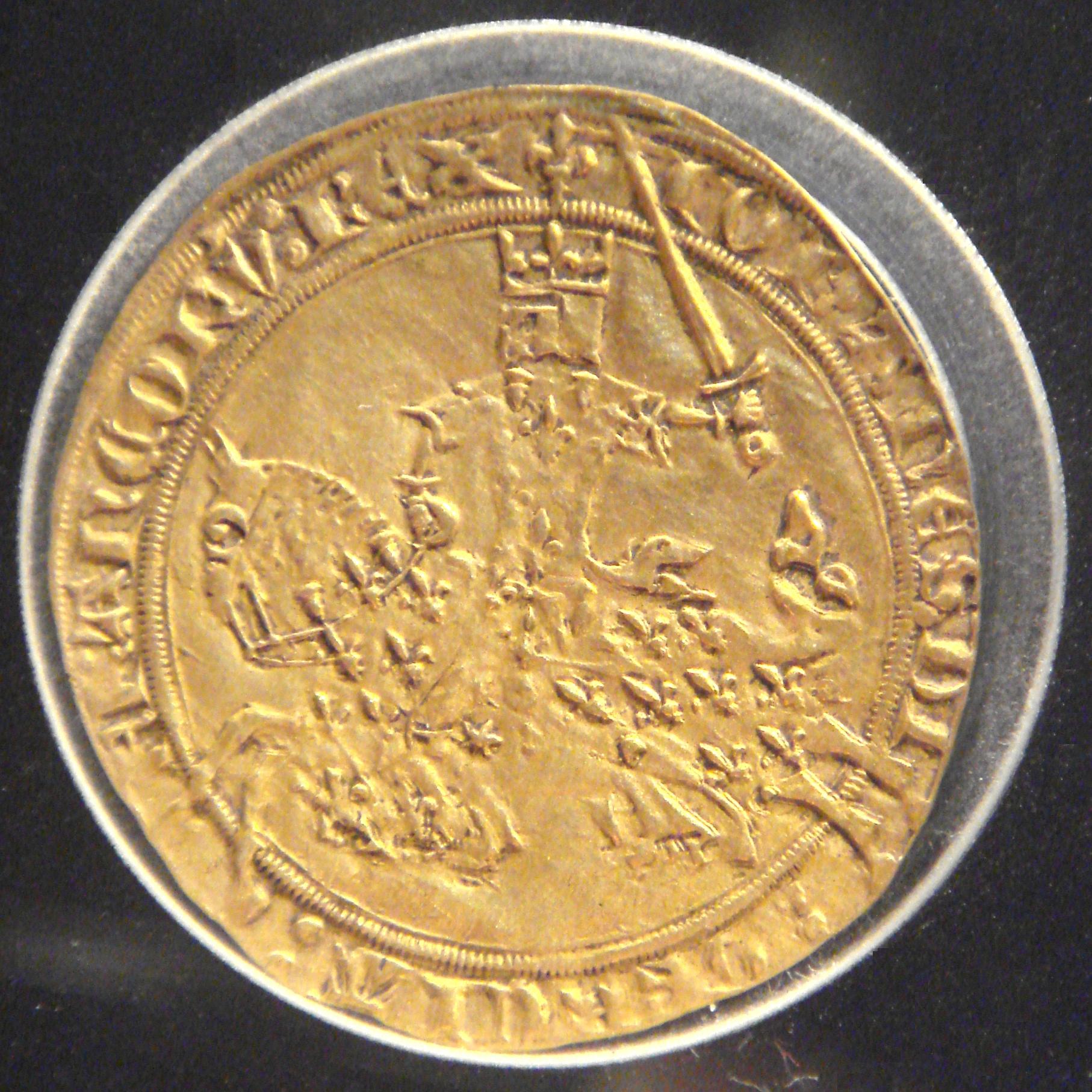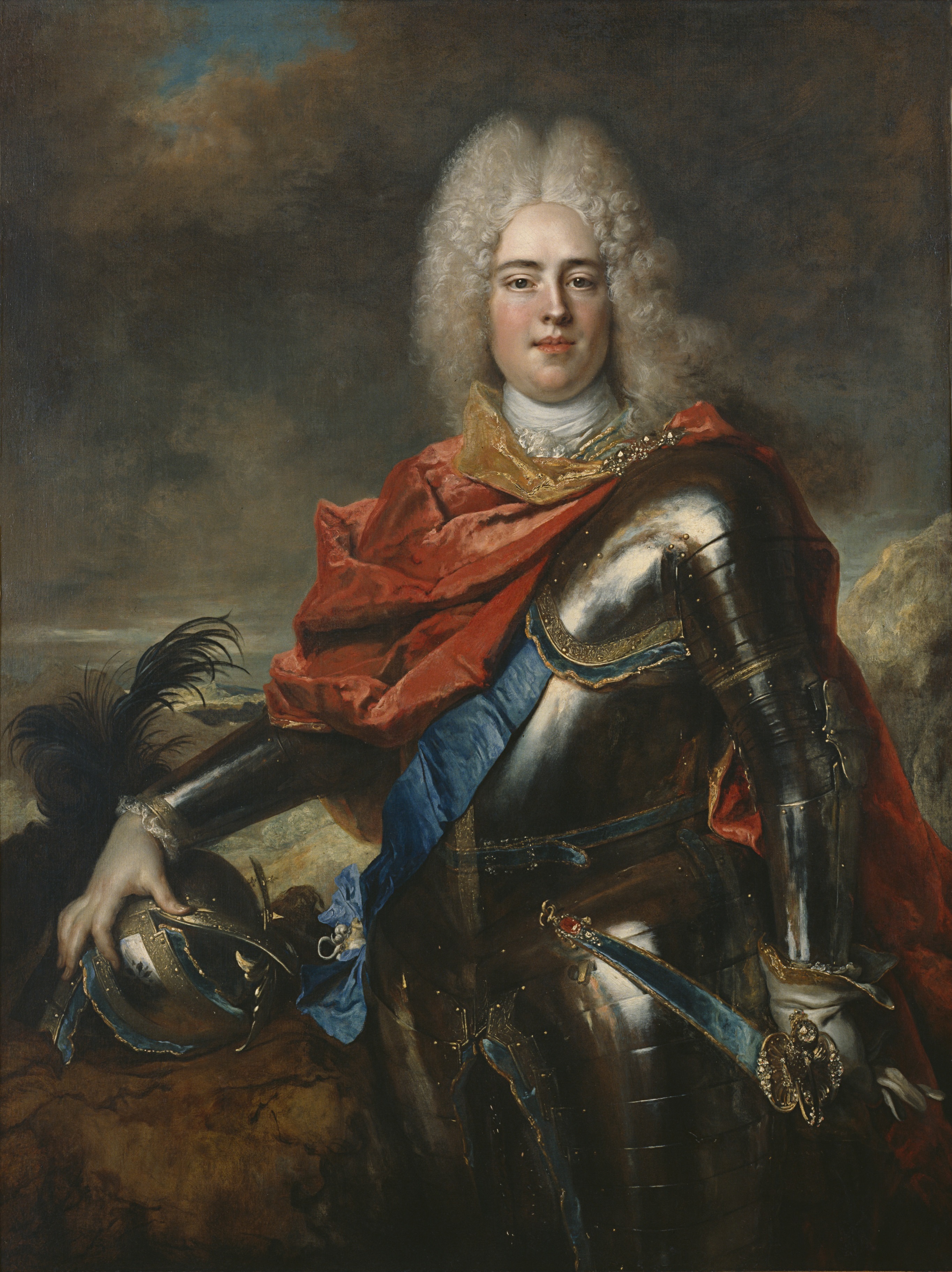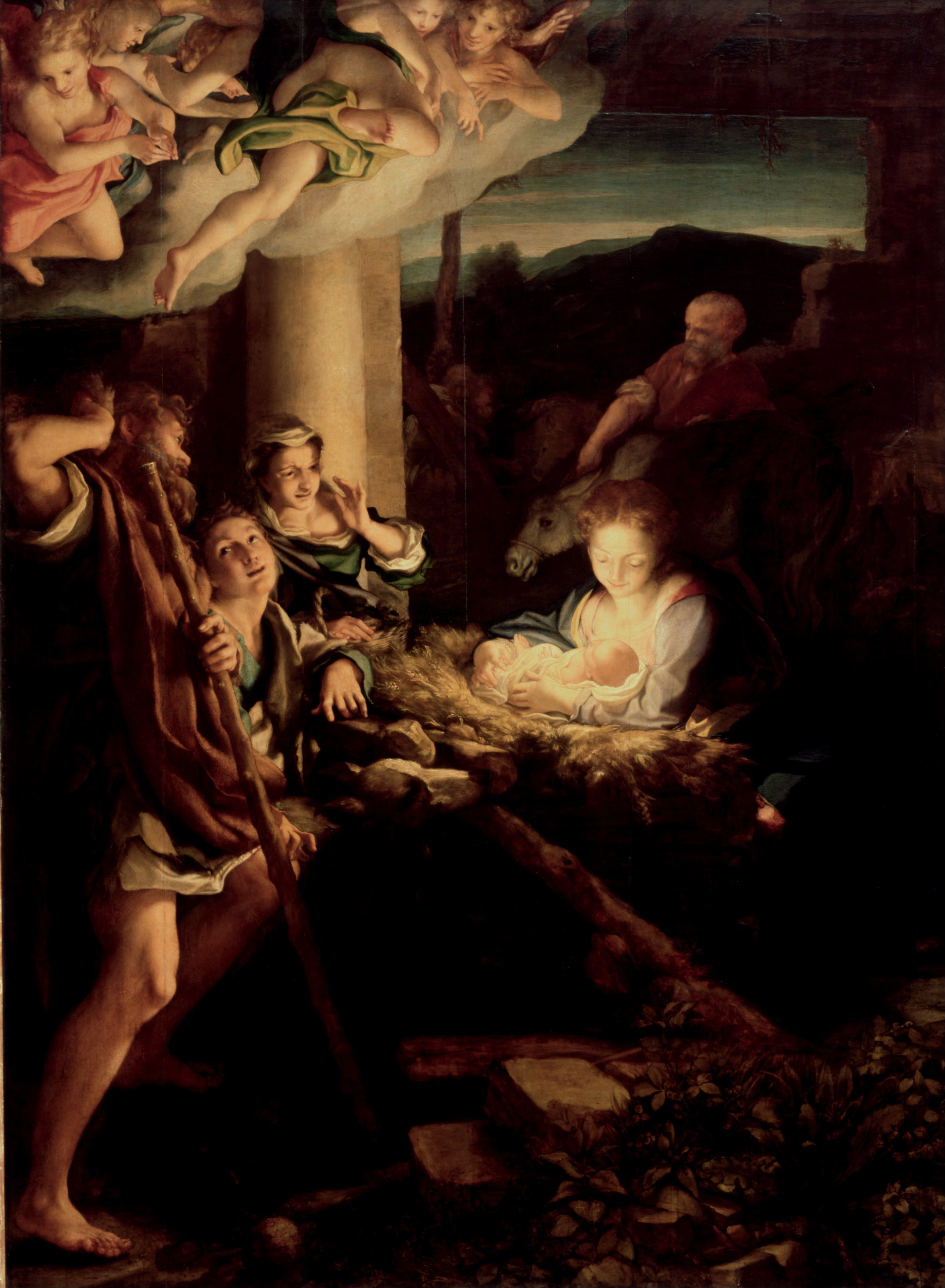|
Sistine Madonna
The ''Sistine Madonna'', also called the ''Madonna di San Sisto'', is an oil painting by the Italian artist Raphael. The painting was commissioned in 1512 by Pope Julius II for the church of San Sisto, Piacenza, and probably executed ''c.'' 1513–1514. The canvas was one of the last Madonnas painted by Raphael. Giorgio Vasari called it "a truly rare and extraordinary work". The painting was moved to Dresden from 1754 and is well known for its influence in the German and Russian art scene. After World War II, it was relocated to Moscow for a decade before being returned to Germany. Composition The oil on canvas painting measures 265 cm by 196 cm. In the painting the Madonna, holding Christ Child and flanked by Saint Sixtus and Saint Barbara, stands on clouds before dozens of obscured putti, while two distinctive winged putti rest on their elbows beneath her. Painting materials Pigment analysis of Raphael's masterpiece reveals the usual pigments of the renaiss ... [...More Info...] [...Related Items...] OR: [Wikipedia] [Google] [Baidu] |
Raphael
Raffaello Sanzio da Urbino (; March 28 or April 6, 1483April 6, 1520), now generally known in English as Raphael ( , ), was an Italian painter and architect of the High Renaissance. List of paintings by Raphael, His work is admired for its clarity of form, ease of composition, and visual achievement of the Platonism in the Renaissance, Neoplatonic ideal of human grandeur. Together with Leonardo da Vinci and Michelangelo, he forms the traditional trinity of great masters of that period. His father Giovanni Santi was court painter to the ruler of the small but highly cultured city of Urbino. He died when Raphael was eleven, and Raphael seems to have played a role in managing the family workshop from this point. He probably trained in the workshop of Pietro Perugino, and was described as a fully trained "master" by 1500. He worked in or for several cities in north Italy until in 1508 he moved to Rome at the invitation of Pope Julius II, to work on the Apostolic Palace at Vatican ... [...More Info...] [...Related Items...] OR: [Wikipedia] [Google] [Baidu] |
Orpiment
Orpiment, also known as ″yellow arsenic blende″ is a deep-colored, orange-yellow arsenic sulfide mineral with formula . It is found in volcanic fumaroles, low-temperature hydrothermal veins, and hot springs and may be formed through sublimation (phase transition), sublimation. Orpiment takes its name from the Latin ''auripigmentum'' (''aurum'', "gold" + ''pigmentum'', "pigment"), due to its deep-yellow color. Orpiment once was widely used in artworks, medicine, and other applications. Because of its toxicity and instability, its usage has declined. Etymology The Latin ''auripigmentum'' (''aurum'', "gold" + ''pigmentum'', "pigment") referred both to its deep-yellow color and to the historical belief that it was thought to contain gold. The Latin term was used by Pliny the Elder, Pliny in the first century CE. The Greek for orpiment was ''arsenikon'', deriving from the Greek word ''arsenikos'', meaning "male", from the belief that metals were of different sexes. This Greek te ... [...More Info...] [...Related Items...] OR: [Wikipedia] [Google] [Baidu] |
Hans Belting
Hans Belting (7 July 1935 – 10 January 2023) was a German art historian and media theorist with a focus on image science, and this with regard to contemporary art and to the Italian art of the Middle Ages and the Renaissance. Biography Belting was born in Andernach, Rhine Province, on 7 July 1935. He studied at the universities of Mainz and Rome, and took his doctorate in art history at the University of Mainz. Belting taught as a professor of art history at the University of Hamburg in 1966, then at the University of Heidelberg, and from 1980 to 1992 at the Ludwig-Maximilians-Universität at Munich. From 1992 until his retirement in 2002, Belting was professor at the Institute for Art History and Media Theory at the State College of Design in Karlsruhe. From October 2004 until the end of September 2007, Belting served as Director of the (International Research Centre for Cultural Studies) in Vienna. Belting published his first monograph in 1962 (''Die Basilica dei Ss. ... [...More Info...] [...Related Items...] OR: [Wikipedia] [Google] [Baidu] |
List Of Most Expensive Paintings
This is a list of the highest known prices paid for paintings. The record payment for a work is approximately United States dollar, US$450.3 million (which includes Commission (remuneration), commission) for the work ''Salvator Mundi (Leonardo), Salvator Mundi'' () generally considered to be by Leonardo da Vinci, though this is disputed. The painting was sold in November 2017, through the auction house Christie's in New York City. Background The most famous paintings, especially old master works created before 1803, are generally owned or held by museums for viewing by patrons. Since museums rarely sell them, they are considered priceless. ''Guinness World Records'' lists Leonardo da Vinci's ''Mona Lisa'' as having the highest insurance value for a painting. On permanent display at the Louvre in Paris, the ''Mona Lisa'' was assessed at US$100 million on 14 December 1962. Taking inflation into account, the 1962 value would be around US$ billion in . The earliest sale on the list b ... [...More Info...] [...Related Items...] OR: [Wikipedia] [Google] [Baidu] |
Francs
The franc is any of various units of currency. One franc is typically divided into 100 centimes. The name is said to derive from the Latin inscription ''francorum rex'' ( King of the Franks) used on early French coins and until the 18th century, or from the French ''franc'', meaning "frank" (and "free" in certain contexts, such as ''coup franc'', "free kick"). The countries that use francs today include Switzerland, Liechtenstein, and most of Francophone Africa. The Swiss franc is a major world currency today due to the prominence of Swiss financial institutions. Before the introduction of the euro in 1999, francs were also used in France, Belgium and Luxembourg, while Andorra and Monaco accepted the French franc as legal tender ( Monégasque franc). The franc was also used in French colonies including Algeria and Cambodia. The franc is sometimes Italianised or Hispanicised as the ''franco'', for instance in Luccan franco. Origins The franc was originally a French go ... [...More Info...] [...Related Items...] OR: [Wikipedia] [Google] [Baidu] |
Augustus III Of Poland
Augustus III (; – "the Saxon"; ; 17 October 1696 5 October 1763) was List of Polish monarchs, King of Poland and Grand Duchy of Lithuania, Grand Duke of Lithuania from 1733 until 1763, as well as List of rulers of Saxony, Elector of Saxony in the Holy Roman Empire where he was known as Frederick Augustus II (). He was the only legitimate son of Augustus II the Strong, and converted to Catholicism in 1712 to secure his candidacy for the Polish throne. In 1719 he married Maria Josepha, daughter of Joseph I, Holy Roman Emperor, and became elector of Electorate of Saxony, Saxony following his father's death in 1733. Augustus was able to gain the support of Charles VI, Holy Roman Emperor, Charles VI by agreeing to the Pragmatic Sanction of 1713 and also gained recognition from Russian Empress Anna of Russia, Anna by supporting Russia's claim to the region of Courland. He was elected king of Poland by a small minority on 5 October 1733 and subsequently banished the former Polish ki ... [...More Info...] [...Related Items...] OR: [Wikipedia] [Google] [Baidu] |
Antonio Da Correggio
Antonio Allegri da Correggio (August 1489 – 5 March 1534), usually known as just Correggio (, also , , ), was an Italian Renaissance painter who was the foremost painter of the Parma school of the High Renaissance, who was responsible for some of the most vigorous and sensuous works of the sixteenth century. In his use of dynamic composition, illusionistic perspective and dramatic foreshortening, Correggio prefigured the Baroque art of the seventeenth century and the Rococo art of the eighteenth century. He is considered a master of chiaroscuro. Early life Antonio Allegri was born in Correggio, a small town near Reggio Emilia. His date of birth is uncertain (around 1489). His father was a merchant. Otherwise little is known about Correggio's early life or training. It is, however, often assumed that he had his first artistic education from his father's brother, the painter Lorenzo Allegri. In 1503–1505, he was apprenticed to Francesco Bianchi Ferrara in Modena, where he ... [...More Info...] [...Related Items...] OR: [Wikipedia] [Google] [Baidu] |
Piacenza
Piacenza (; ; ) is a city and (municipality) in the Emilia-Romagna region of Northern Italy, and the capital of the province of Piacenza, eponymous province. As of 2022, Piacenza is the ninth largest city in the region by population, with more than 102,000 inhabitants. Westernmost major city of the region of Emilia-Romagna, it has strong relations with Lombardy, with which it borders, and in particular with Milan. It was defined by Leonardo da Vinci as a "Land of passage" in his Codex Atlanticus, by virtue of its crucial geographical location. This strategic location would influence the history of Piacenza significantly at several times. Piacenza integrates characteristics of the nearby Ligurian and Piedmontese territories added to a prevalent Lombard influence, favored by communications with the nearby metropolis, which attenuate its Emilia (region), Emilian footprint. Piacenza is located at a major crossroads at the intersection of Route E35/A1 between Bologna and Milan, an ... [...More Info...] [...Related Items...] OR: [Wikipedia] [Google] [Baidu] |
Benedictine
The Benedictines, officially the Order of Saint Benedict (, abbreviated as O.S.B. or OSB), are a mainly contemplative monastic order of the Catholic Church for men and for women who follow the Rule of Saint Benedict. Initiated in 529, they are the oldest of all the religious orders in the Latin Church. The male religious are also sometimes called the Black Monks, especially in English speaking countries, after the colour of their habits, although some, like the Olivetans, wear white. They were founded by Benedict of Nursia, a 6th-century Italian monk who laid the foundations of Benedictine monasticism through the formulation of his Rule. Benedict's sister, Scholastica, possibly his twin, also became a religious from an early age, but chose to live as a hermit. They retained a close relationship until her death. Despite being called an order, the Benedictines do not operate under a single hierarchy. They are instead organized as a collection of autonomous monasteries ... [...More Info...] [...Related Items...] OR: [Wikipedia] [Google] [Baidu] |
Pope Sixtus IV
Pope Sixtus IV (or Xystus IV, ; born Francesco della Rovere; (21 July 1414 – 12 August 1484) was head of the Catholic Church and ruler of the Papal States from 9 August 1471 until his death in 1484. His accomplishments as pope included the construction of the Sistine Chapel and the creation of the Vatican Library. A patron of the arts, he brought together the group of artists who ushered the early Renaissance into Rome with the first masterpieces of the city's new artistic age. Sixtus created the Spanish Inquisition through the Papal bull ''Exigit Sinceræ Devotionis'' (1478), and annulled the Pontifical decrees of the Council of Constance. He was noted for his nepotism and was personally involved in the infamous Pazzi conspiracy, a plot to remove the Medici family from power in Florence. Early life Francesco was a member of the Della Rovere family, a son of Leonardo Beltramo di Savona della Rovere and Luchina Monteleoni. He was born in Celle Ligure, a town near S ... [...More Info...] [...Related Items...] OR: [Wikipedia] [Google] [Baidu] |
Deutscher Kunstverlag
The Deutscher Kunstverlag (DKV) is an educational publishing house with offices in Berlin and Munich. The publisher specializes in books about art, cultural history, architecture Architecture is the art and technique of designing and building, as distinguished from the skills associated with construction. It is both the process and the product of sketching, conceiving, planning, designing, and construction, constructi ..., and historic preservation. History Deutscher Kunstverlag was founded in 1921 in Berlin. Founders were the publishing companies Insel Verlag, E. A. Seemann, Deutsche Verlags-Anstalt, Julius Hoffmann, G. Grote, Julius Bard, and Walter de Gruyter, as well as the bank . Some book series appeared already in 1925, which to this day still partially determine the publishing profile. In addition to scientific publications, the Deutscher Kunstverlag publishes art books and exhibition catalogs. After the Second World War, the publisher moved its hea ... [...More Info...] [...Related Items...] OR: [Wikipedia] [Google] [Baidu] |
Vermilion
Vermilion (sometimes vermillion) is a color family and pigment most often used between antiquity and the 19th century from the powdered mineral cinnabar (a form of mercury sulfide). It is synonymous with red orange, which often takes a modern form, but is 11% brighter (at full brightness). Etymology and common name Used first in English in the 13th century, the word ''vermilion'' came from the Old French word ''vermeillon'', which was derived from ''vermeil'', from the Latin ''vermiculus'' the diminutive of the Latin word ''vermis'' for worm. The name originated because it had a similar color to the Kermes (dye), natural red dye made from an insect, '' Kermes vermilio'', which was widely used in Europe. The first recorded use of "vermilion" as a color name in English was in 1289. The term cinnabar is used in mineralogy and crystallography for the red crystalline form of mercury sulfide HgS. Thus, the natural mineral pigment is called "cinnabar", and its synthetic form i ... [...More Info...] [...Related Items...] OR: [Wikipedia] [Google] [Baidu] |









